In 1980, Terry Fox ran the equivalent of almost 130 marathons in just 143 days to raise money for cancer research — despite the difficulties of running with a prosthetic leg.

R. D. BarryOn many days of the 143-day Marathon of Hope, Terry Fox ran along the side of the highway alone, followed by his brother and a friend in a van.
The night before doctors would amputate his cancerous leg, 18-year-old Terry Fox read about a runner who finished the New York Marathon with a prosthetic leg.
“It was then I decided to meet this new challenge head on and not only overcome my disability, but conquer it in such a way that I could never look back and say it disabled me,” Fox later wrote, according to the Canadian Encyclopedia.
Inspired by the cancer patients he met while undergoing 16 months of chemotherapy, Fox vowed to run across Canada to raise money for cancer research.
His efforts have since raised over $850 million. Tragically, Fox did not live long enough to see his full impact.
From Cross Country To Wheelchair Basketball
Born in Winnipeg, Manitoba in 1958, Terry Fox spent much of his childhood in a suburb of Vancouver, British Columbia, where he played sports from an early age.
Even though he barely topped five feet tall in 8th grade, Fox practiced daily to make his school’s basketball team. And while he made the team, he only played a single minute the entire season. But Fox didn’t give up.
An all-around athlete, Fox also ran cross country, played soccer and rugby, and eventually landed a spot on the junior varsity basketball team at Simon Fraser University.
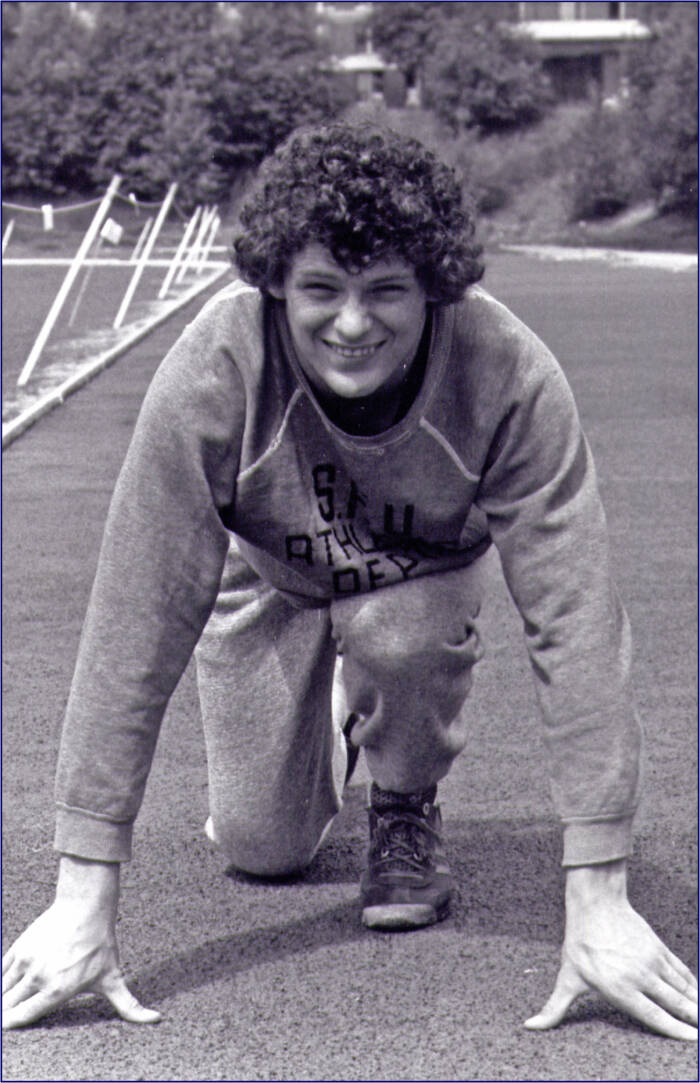
Simon Fraser UniversityIn college, Terry Fox played on the junior varsity basketball team before his diagnosis with bone cancer.
But in 1976, Fox noticed a strange pain in his leg. That year, he’d walked away from a car accident with no injuries. So Fox assumed the crash caused his sore knee. When the pain persisted, he suspected a basketball injury.
Then the pain got so bad that Fox could barely move. He visited an orthopedic doctor, where X-rays revealed a life-changing diagnosis: Fox had bone cancer, which could spread quickly from his leg unless doctors amputated.
Terry Fox was 18 years old when doctors amputated his right leg above the knee in March 1977.
The next morning, Fox showed his nurse an article about an amputee who finished the New York City Marathon, telling her, “Someday I’m going to do something like that.”
And he did.
Terry Fox’s Training Begins
After his surgery, Terry Fox adapted to life with an artificial leg. Soon, he could play rounds of golf with his father. By summer, he’d joined a wheelchair basketball team, later landing a spot on the national wheelchair basketball championship team.
Meanwhile, Fox spent 16 months undergoing chemotherapy.
“[A]s I went through the 16 months of the physically and emotionally draining ordeal of chemotherapy, I was rudely awakened by the feelings that surrounded and coursed through the cancer clinic,” Fox later wrote to the Canadian Cancer Society. “There were faces with the brave smiles, and the ones who had given up smiling.”
The experience motivated Fox to raise money for cancer research. And he decided to run across Canada with a goal of raising a dollar for every person in the country — an ambitious goal of about $24 million.
When Fox began training, he could barely run half a mile on his artificial leg. Nightly visits to a junior high track built up Fox’s endurance. He worked closely with a prosthetist to modify his artificial leg to suit long-distance running.
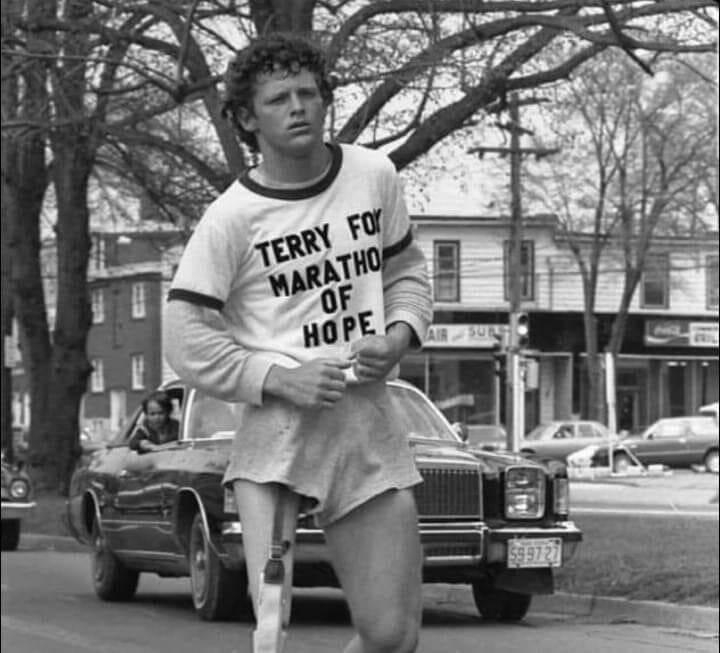
R. D. BarryBefore starting his Marathon of Hope, Terry Fox trained for months to build up his stamina.
In August 1979, Fox ran a 17-mile race in Prince George, British Columbia. While he came in last, the race convinced Fox that he could run across Canada. The next spring, Fox would begin the Marathon of Hope.
Before starting his cross-country run, Terry Fox wrote to the Canadian Cancer Society, suggesting a partnership. “The running I can do,” Fox promised, “even if I have to crawl every last mile.
“I am not a dreamer, and I am not saying that this will initiate any kind of definitive answer or cure to cancer. But I believe in miracles. I have to.”
The Marathon Of Hope Begins
On April 12, 1980, Terry Fox plunged his artificial leg into the Atlantic Ocean. It was the first day of Fox’s run across Canada to raise money for cancer research — and Fox hoped that on the final day, he would dip the same leg into the Pacific.
Fox began his journey in Newfoundland, trailed by a van carrying his brother and a friend. Day after day, Fox ran the length of about a marathon. Some days, that meant running from 4:30 a.m. until after 7 p.m. When he couldn’t afford a place to stay, Fox slept in the van.
The Marathon of Hope started slow. Initially, few were aware of Fox’s mission, and some drivers would even honk and yell at him to get off the road. .
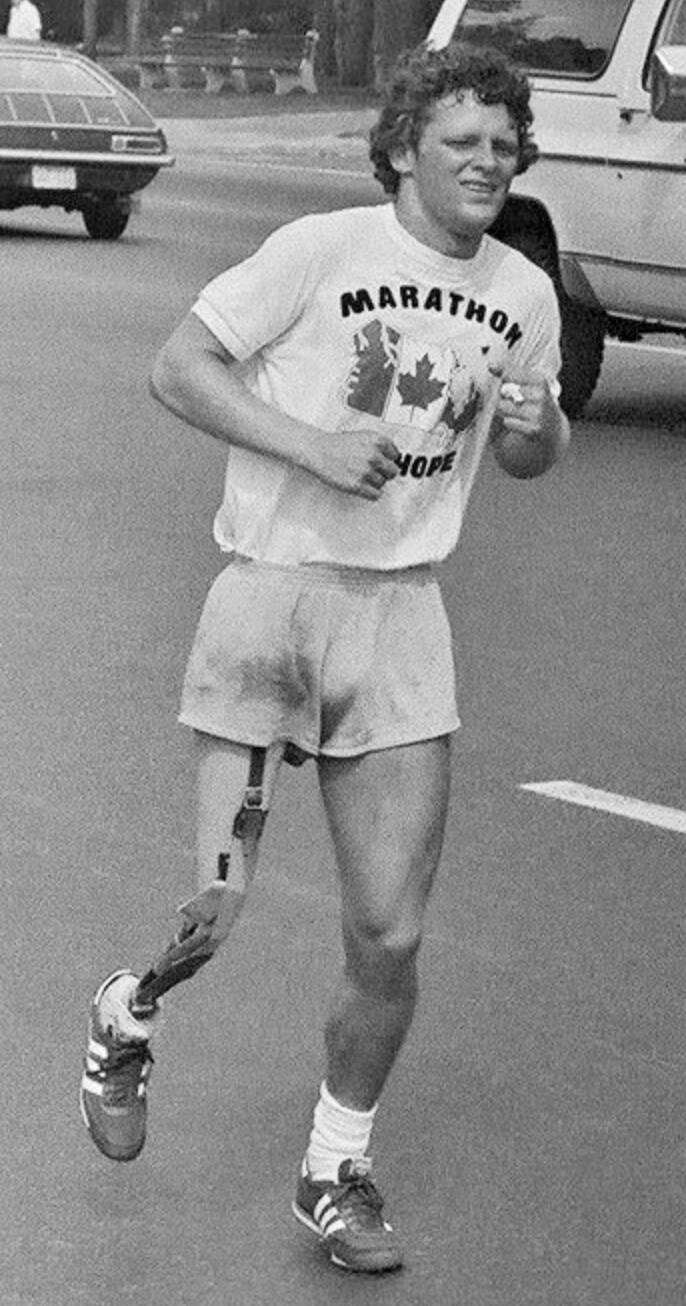
Wikimedia CommonsTerry Fox ultimately covered 3,339 miles during his 143-day Marathon of Hope.
Eventually, the Toronto Star caught wind of Fox’s run and began publishing a weekly column on his progress. The Canadian Cancer Society staged several public appearances. Practically overnight, Terry Fox became a national hero.
When Fox reached Ontario, he was greeted by Prime Minister Pierre Trudeau. Crowds flocked to Fox’s route to cheer him on, and he was even given a provincial police escort.
Most importantly, the publicity also brought in donations.
The Tragic End To The Marathon Of Hope
After running for 143 days, Fox had to stop on Sept. 1, 1980. He’d reached Thunder Bay, Ontario, 3,339 miles from where he’d started months earlier. In that time, Fox had run the equivalent of almost 130 marathons.
But the cancer had spread to Fox’s lungs, forcing him to end the Marathon of Hope.
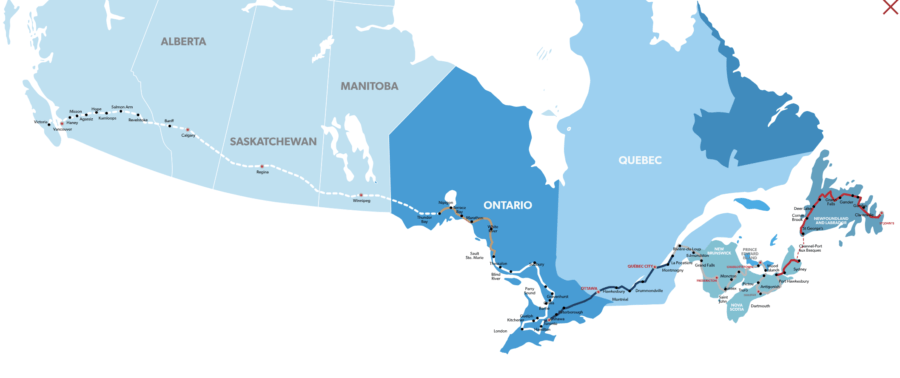
Terry Fox FoundationTerry Fox planned to cross the entire country of Canada during his run.
Days later, Canada’s CTV ran a telethon that raised $6.5 million in just five hours. Fox’s marathon had brought in over $10 million, with more donations pouring in. The Canadian Press named Fox the Newsmaker of the Year, while he also brought home the trophy for Canada’s Athlete of the Year.
By February 1981, less than one year after starting the Marathon of Hope, Fox had reached his goal of raising $1 for every Canadian.
Yet even aggressive treatments couldn’t prevent Fox’s cancer from spreading. He died in June 1981, a month before his 23rd birthday.
The Legacy Of Terry Fox
When Terry Fox died in 1981, Prime Minister Pierre Trudeau addressed the House of Commons to commemorate the inspirational athlete.
“It occurs very rarely in the life of a nation that the courageous spirit of one person unites all people in the celebration of his life and in the mourning of his death,” Trudeau said.
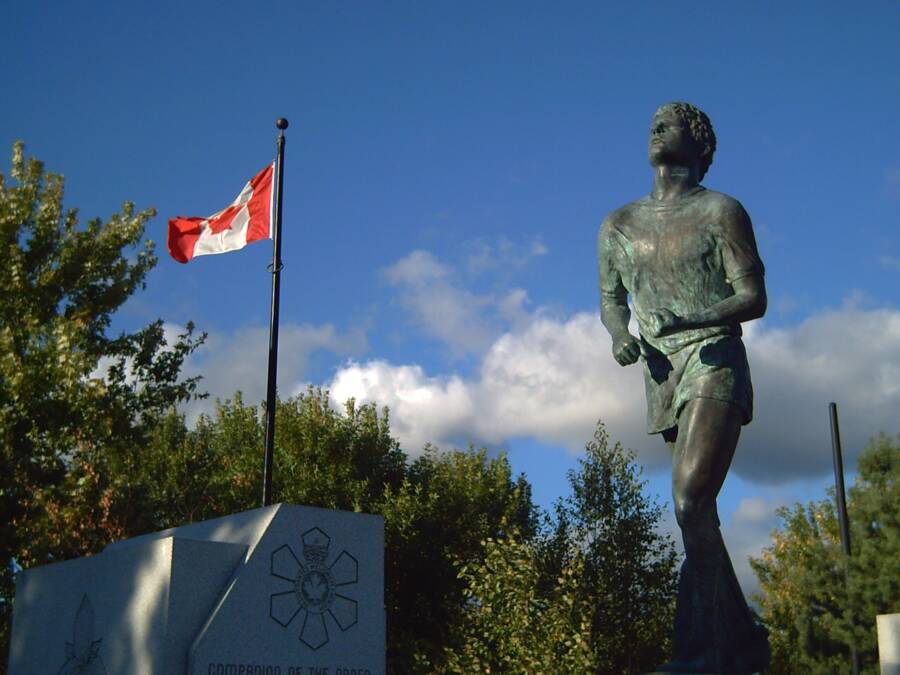
Wikimedia CommonsIn Thunder Bay, a monument recognizes Terry Fox’s Marathon of Hope.
Fox’s story inspired others to continue his fundraising efforts. In 1981, Canada held its first Terry Fox Run, a tradition that continued annually. The Terry Fox Foundation, run by Fox’s family, counts more than $850 million raised for cancer research in his name.
Terry Fox’s legacy continued long after his death. Next, learn about how Henrietta Lacks contributed to science after she died from cervical cancer. Then, read about Chick Donohue and “The Greatest Beer Run Ever.”





